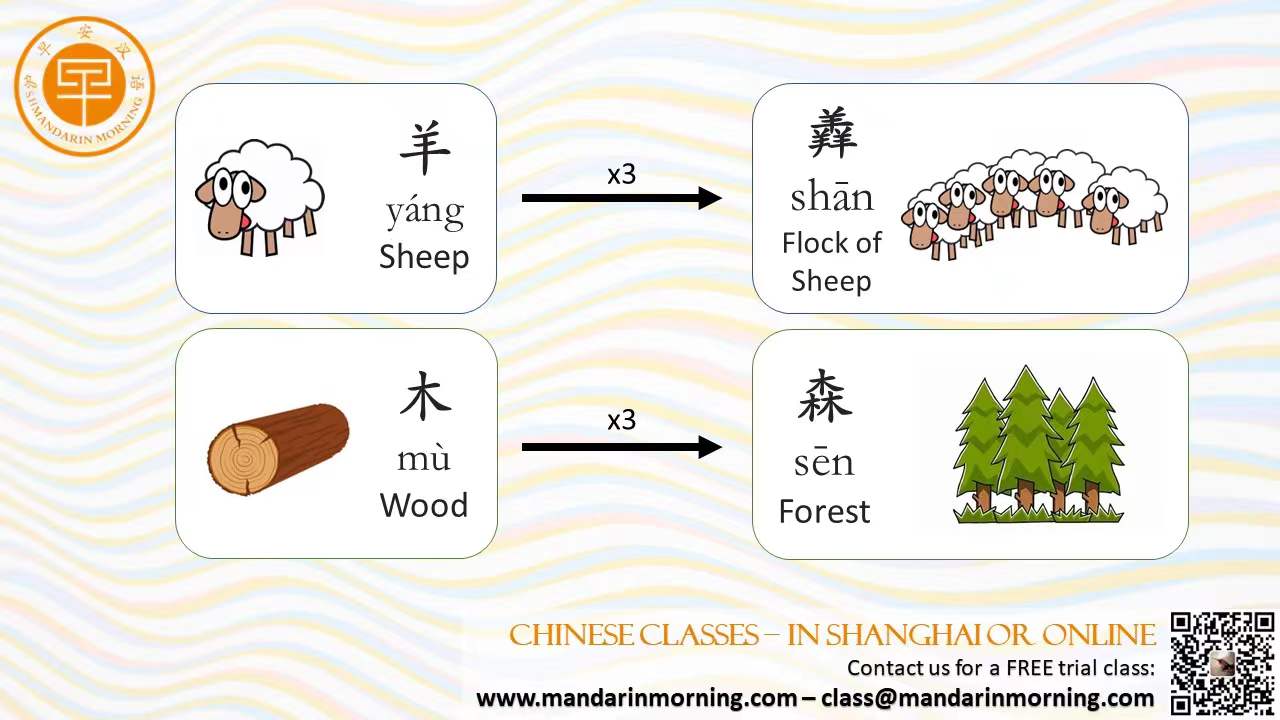| Chinese Characters can be really complicated, but actually every character is built up using a series of radicals and strokes which means even the most ridiculous looking characters all have their logic. Every single Chinese character can be broken down using these strokes and radicals which makes our lives a little easier! Let’s check out some of the most complicated Chinese characters:  Cū 麤 (Rough/Coarse) The character is made up of a common format used in Chinese: Take one character and multiply it by three! You see it all the time. The most basic examples of this could be for wood and forest (木 and 森) or even the characters for the numbers one and three (一 and 三). Let’s take the character for deer, 鹿 lù. On it’s own, it’s not too bad, but multiple thrice, and we find ourselves in a bit of a pickle! So many strokes! But at least you know how to decode it, and many other characters now. This is a very common trick used in Chinese characters. Shān 羴 (Flock of sheep) Well, look at that, the same system we saw in example one has been used here, but the meaning of this one might prove easier to remember for reasons we will explain now. The character for sheep on its own is 羊 yáng, so how convenient the Chinese decided to make the plural for sheep, three sheeps pushed together! Sometimes Mandarin really can be incredibly logical to learn. Pān 攀 (Climb/Clamber) Whereas a lot of the examples here you won’t see a lot day to day, this one might prove to be an exception. This character will often be seen on warning signs in the metro, or at scenic spots around China gives it’s meaning. At least now, you’ll be the one in the know when everyone else is scratching their heads! |